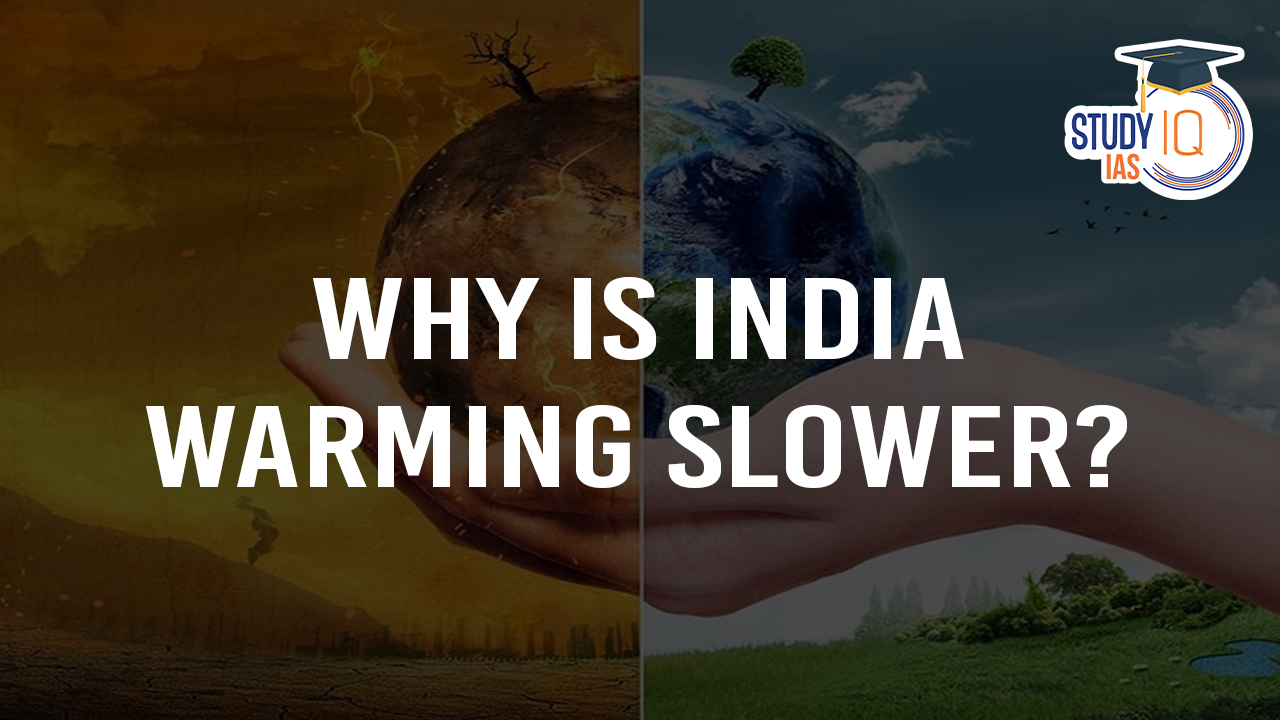Table of Contents
The complexity in comparing global warming data with India’s specific warming trends arises from several factors, including different data sets, geographical variations, and environmental conditions. Key challenges include:
- Baseline Differences
- Global Warming: Global warming measurements typically encompass both land and ocean surfaces. Oceans play a crucial role in regulating the Earth’s temperature due to their vast size and high heat capacity. They absorb and release heat more efficiently than land, which significantly impacts global temperature averages.
- Indian Meteorological Data: In contrast, the data provided by the Indian Meteorological Department (IMD) focuses solely on land temperatures. This means that India’s warming trend may appear different from global trends, which incorporate both land and ocean warming. Since land warms more rapidly than oceans, global temperature increases may appear more significant than those reported for India.
- Land and Ocean Warming Trends:
- Global warming data indicates that land areas have experienced more significant warming compared to oceans. Since the pre-industrial era, land temperatures have risen by more than 1.6°C, whereas ocean temperatures have warmed by approximately 0.9°C. This discrepancy is due to oceans’ high heat retention properties compared to land, as well as their larger heat capacity and slower warming processes.
- For 2024, predictions suggest that land warming will exceed 1.6°C globally due to extreme weather events such as heatwaves, droughts, and altered weather patterns. However, the warming over oceans will remain comparatively lower, affecting the overall global temperature trend.
Ready to turn your UPSC dreams into reality? Join the trusted StudyIQ UPSC Foundation P2I Live Hinglish Batches today! Our expert-led courses are designed to build a solid foundation while keeping you updated with the latest exam trends. Contact us now to enroll and get one step closer to cracking the UPSC exam with confidence.
Reasons for Lower Warming Over India
India’s relatively moderate warming compared to other regions, such as the Arctic, can be attributed to a variety of geographical, environmental, and climatic factors:
- Geographical Location:
- India is situated in the tropical zone, where the temperature rise tends to be less pronounced than in higher latitudes, such as the polar regions. In tropical areas, the earth’s surface receives more consistent solar radiation throughout the year, and the effects of warming may be less severe compared to regions closer to the poles, where temperature variations are more pronounced.
- The equatorial region typically experiences a more stable temperature system, making it less sensitive to extreme changes in the climate compared to colder regions that are experiencing polar amplification.
- Polar Amplification:
- Arctic Warming: The Arctic region has warmed at approximately twice the global average rate, a phenomenon known as polar amplification. Since pre-industrial times, temperatures in the Arctic have risen by at least 2°C.
- Two main processes drive this rapid warming in the polar regions:
- Albedo Effect: As ice sheets and glaciers in the Arctic melt, they expose darker ocean waters or land, which absorb more heat than the reflective ice. This further accelerates warming in the region.
- Heat Transfer: The movement of warm air from the tropics to the poles also plays a role in the warming of the Arctic. As warm air travels northward, it contributes to the rising temperatures in these regions.
- Two main processes drive this rapid warming in the polar regions:
- Arctic Warming: The Arctic region has warmed at approximately twice the global average rate, a phenomenon known as polar amplification. Since pre-industrial times, temperatures in the Arctic have risen by at least 2°C.
- Aerosols and Pollution:
- India experiences high levels of air pollution, primarily from industrial activities, transportation, and agriculture. These aerosols (tiny particles suspended in the air) play a significant role in moderating temperature changes.
- Cooling Effect of Aerosols: Aerosols scatter incoming solar radiation, reflecting a portion of it back into space, which can result in a temporary cooling effect over India. This contrasts with the general warming trend observed in many other parts of the world.
- Additionally, aerosols can influence cloud formation, affecting the planet’s radiation balance and contributing to regional cooling, despite the overall global warming trend.
- India’s tropical climate and heavy pollution contribute to a substantial amount of particulate matter in the atmosphere, which unintentionally acts as a buffer against more rapid warming. However, it should be noted that while this cooling effect may delay warming, it also has detrimental health and environmental consequences, such as poor air quality, reduced visibility, and harmful respiratory effects.
- India experiences high levels of air pollution, primarily from industrial activities, transportation, and agriculture. These aerosols (tiny particles suspended in the air) play a significant role in moderating temperature changes.
- Regional Climate Systems:
- India’s monsoon system, influenced by the Indian Ocean, also plays a role in regulating temperature fluctuations. The monsoon helps moderate heat by bringing in large amounts of moisture and precipitation, which can reduce the intensity of surface warming. However, changes in the monsoon patterns due to climate change can also lead to extreme weather events, such as intense rainfall or droughts, further complicating the overall climate dynamics in the region.
Conclusion
While global warming affects both land and ocean areas, the temperature rise on land surfaces is generally more pronounced. For India, various factors, such as its tropical location, geographical positioning, and high aerosol concentrations, have contributed to a relatively lower rate of warming. However, the impact of these factors should not be underestimated, as the cooling effects of aerosols are not permanent, and ongoing pollution, as well as changes in monsoon patterns, could intensify India’s vulnerability to future climate change.


 India Shot Down Pakistani F-16 Jet Amid ...
India Shot Down Pakistani F-16 Jet Amid ...
 Akashteer System, Purpose, Benefits, Sig...
Akashteer System, Purpose, Benefits, Sig...
 Total Blackout in Jammu and Kashmir Afte...
Total Blackout in Jammu and Kashmir Afte...





















